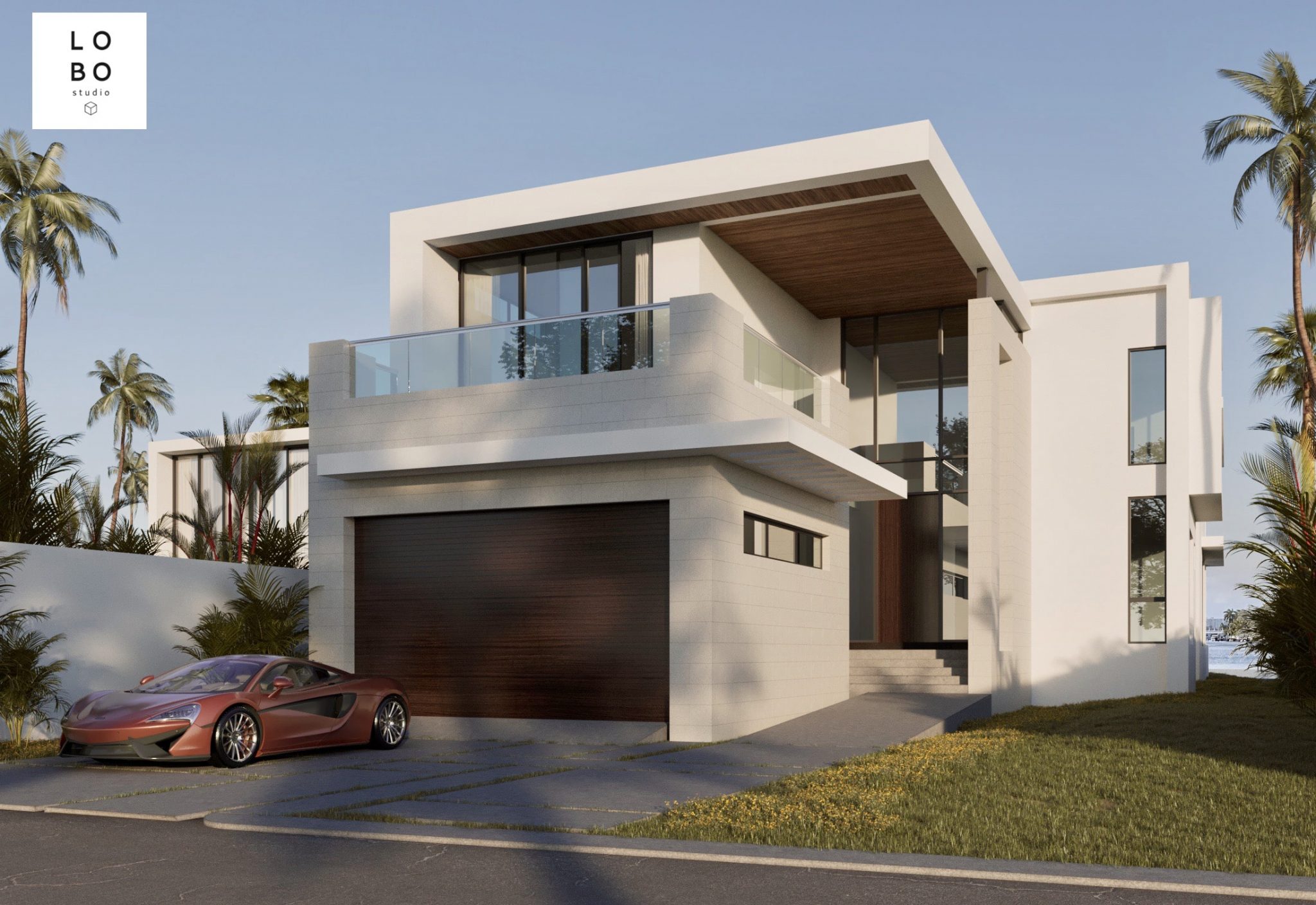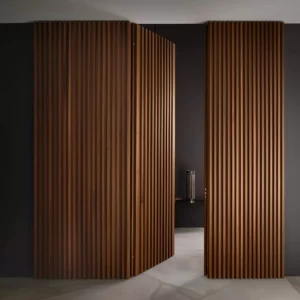The definitive guide to buy prefabricated houses: prices, construction times, advantages, disadvantages, construction materials...
Prefabricated houses are nothing new in the architecture and construction sector. Several years ago, this type of housing was very popular in the United States and Canada.
And is that prefabricated houses use a production system in which the house is built by modular pieces in the factory itself and then transported and installed on the ground. While it is true that in recent times its demand in Spain is rising like the foam. There are many benefits and reasons why more and more people opt for these houses.
Especially during the health crisis we are living, we have rethought our way of life and consequently, there are those who have decided to change their home and have it made to measure, according to their needs and preferences.
But, really, do we know everything we should know before buying a prefabricated house? Is it true that its price is lower than a regular house? What construction materials are used? Can we install it anywhere? Today, in Lobo Studio, we want to solve these and many other doubts that may arise when acquiring this type of property.
Why are prefabricated houses a good option?
If you are considering buying a house or you are an architect or builder and want to get started in this new housing system, it is important that you know its benefits. It is true that prefabricated houses can look a lot like a conventional building when it comes to inhabit it, but is it worth investing in them? It all depends on many factors. The main one is the quality and the raw materials used. Normally, prefabricated houses are made of concrete or wood, which are much more sustainable materials. Recycled materials and more efficient sound insulation and ventilation systems are also used.
Therefore, prefabricated houses allow a customized design, something very attractive for the client or owner, since he can create his home according to his tastes and needs. In addition, the construction and installation time is less than an ordinary house, especially due to the fact that the production process is done in the factory and this makes it faster, cheaper and, therefore, has less impact on the environment.
There are many factors, both architecture, construction and design, that influence the fact that prefabricated houses are sustainable and efficient housing, which is why many people opt for this type of construction. A circumstance that you can not lose sight of since, during this year and next 2021, sustainability and energy savings stand as one of the most important trends in the sector.
How much can prefabricated houses cost?
You may have heard that prefabricated houses have a lower price than a conventional house. Although it is true that this thought arises from thinking that a prefabricated house is of lower quality.
And far from it. As we have already mentioned, prefabricated houses are custom homes. Normally, the companies that build these homes have standardized models, depending on the square footage, bedrooms or structure.
But this does not mean that the client cannot design his own house, quite the contrary. He will be able to add or choose modules, distribution and materials as he sees fit, and it will affect the cost of the house to a greater or lesser extent, as is logical.
By optimizing the design, fabrication and on-site installation processes, the price can be much tighter.
While it is true that the price range is very oscillating for all the factors we have discussed, the customer can get a custom home with a contemporary and attractive design for a cost of between 70,000 € and 100,000 €.
To this price we must add the cost of the land and depending on the company, transportation, installation and/or VAT.
How long does it take to build prefabricated houses?
The client can obtain a turnkey home within 4 to 6 months. This obviously depends on several factors. The complexity of the project, the duration of the construction work according to the construction company, as well as other external reasons, such as the delivery time of the permits and licenses granted by the city council, will have to be taken into account.
What is certain is that the construction periods of prefabricated houses are shorter than a traditional house. If we take into account that the manufacturing system is carried out in the factory itself, this allows that at the same time work is done on the ground preparation and, therefore, the construction process is accelerated.
How long do prefabricated houses last?
The durability of prefabricated houses must be associated with safety. By this we mean that a house, whether modular or traditional, will have a longer life time as long as the structure and materials used are of higher quality and safer.
There is a tendency to think that prefabricated houses, because they are not manufactured on site or are built quickly, are more fragile or only serve as a second home of low quality. And this is a myth and even more so today. Today, prefabricated houses have a durability equal to or even greater than a conventional house.
Mainly because the materials used, such as concrete, wood or steel, are more resistant and require less maintenance. Although, like everything else, it will also depend on the quality we choose. More quality, more durability.
On the other hand, as time goes by, our tastes and design trends change and you may want to renovate or redesign your home.
In prefabricated houses this is an advantage. And we tell you why. Being built with modular pieces, this system allows you to modify its structure and distribution.
They can even be transported to another location. So if in the future you decide to expand your home or change your place of residence, you only have to take into account the additional costs without worrying, the rest is easy.
The only thing we recommend you to do is to go to a reliable architectural and construction company.
But, as you know, this should apply to any type of property. The manufacturers of prefabricated houses normally have a 10-year warranty on the structure of the house. Therefore, once the work is finished, if the house suffers any damage or any maintenance work has to be carried out, the company will take care of it.

What materials are used to build prefabricated houses?
Although we have already left you some hints about it, surely you are wondering what materials are made prefabricated houses. The first thing to keep in mind is that this type of construction is a house and as such, must meet the standards of use and quality of approved materials.
Therefore, a prefabricated house will never have quality systems below a conventional building. The truth is that the materials used are usually better, since, as we said, they seek to provide the house with greater comfort and insulation, thus making it more efficient and sustainable.
The most common prefabricated houses are usually made of concrete, which allows to easily create modular pieces and also, the house does not need load-bearing pillars to support the structure and, thus, design an open and modern space with a material of high strength and very good insulation.
There are also prefabricated wooden houses that, despite having a more rustic and warm air, are one of the most sustainable and durable materials. Finally, in the market of prefabricated houses you can find steel houses that, due to their anticorrosive and rustproof capabilities, do not require high maintenance.
Of course. If you can choose between different materials, always think about durability, resistance and, above all, quality, as well as design and style. You know that cheap is expensive.
Are licenses and permits required to build prefabricated houses?
There is no doubt about it, yes. In this aspect we are forceful. And it is that many still tend to believe that prefabricated houses can be built on any lot or land regardless of licenses and building permits. But for some time now, this has been regularized, since the Civil Code, in its article 334, differentiates between movable and immovable property.
Prefabricated houses belong to the latter group since they require foundations and public supplies, such as energy and water. Therefore, you must apply for a license for construction, location, installation on the ground and the relevant works that are collected in the Technical Building Code and the Law of Building Management.
Another key point to consider is the land, which must be urban. To do this, you must apply to the city council for a building permit for the corresponding plot.
Each Autonomous Community has its own regulations, but in some municipalities there are more or less flexible rules.
Therefore, the municipal technician will provide you with the characteristics of the land, taking into account the buildable area, exterior finishes and permitted heights. So no, you already know that a prefabricated house cannot be installed in any free space.
In the same way, if a manufactured home is considered real estate, it also acquires the mortgage benefits as such. If you need financing for a modular home, you can apply for the corresponding loan in the same way as for a regular home.
What are the differences between prefabricated houses, mobile homes and industrialized houses?
We wanted to make a digression in this aspect. And is that there is some confusion between these three types of housing. So let's see how they differ. Prefabricated houses, as we have already seen, are homes that are installed previously built.
On the other hand, industrialized houses would be the combination of the construction system of a conventional house or a prefabricated house.
In an industrialized house, only the walls and slabs are manufactured externally and then transported and installed on site. And finally, there are mobile homes.
These houses are also created in a factory as a whole, but they can be moved at any time. They are equipped with a trolley, a fixed chassis and wheels for transportation. They are usually arranged in campgrounds or country areas, but are not anchored to the ground and are therefore not considered real estate.
Therefore, they do not require a municipal license and have a VAT rate of 21%, unlike prefabricated houses that would only be 10%.
And so far our post about prefabricated houses. We hope you have found it interesting and that if you had any questions about it, it has been solved.
And who knows? Maybe the next one to buy a prefabricated house will be you. If so, you can take a look at our posts on the best prefabricated concrete house companies and prefabricated wooden houses.
Tell us what is your opinion about this type of modular housing. Do you dare to buy a prefabricated house?
If you still don't know what we do at Lobo Studio you can see our portfolio or follow us on IG.





